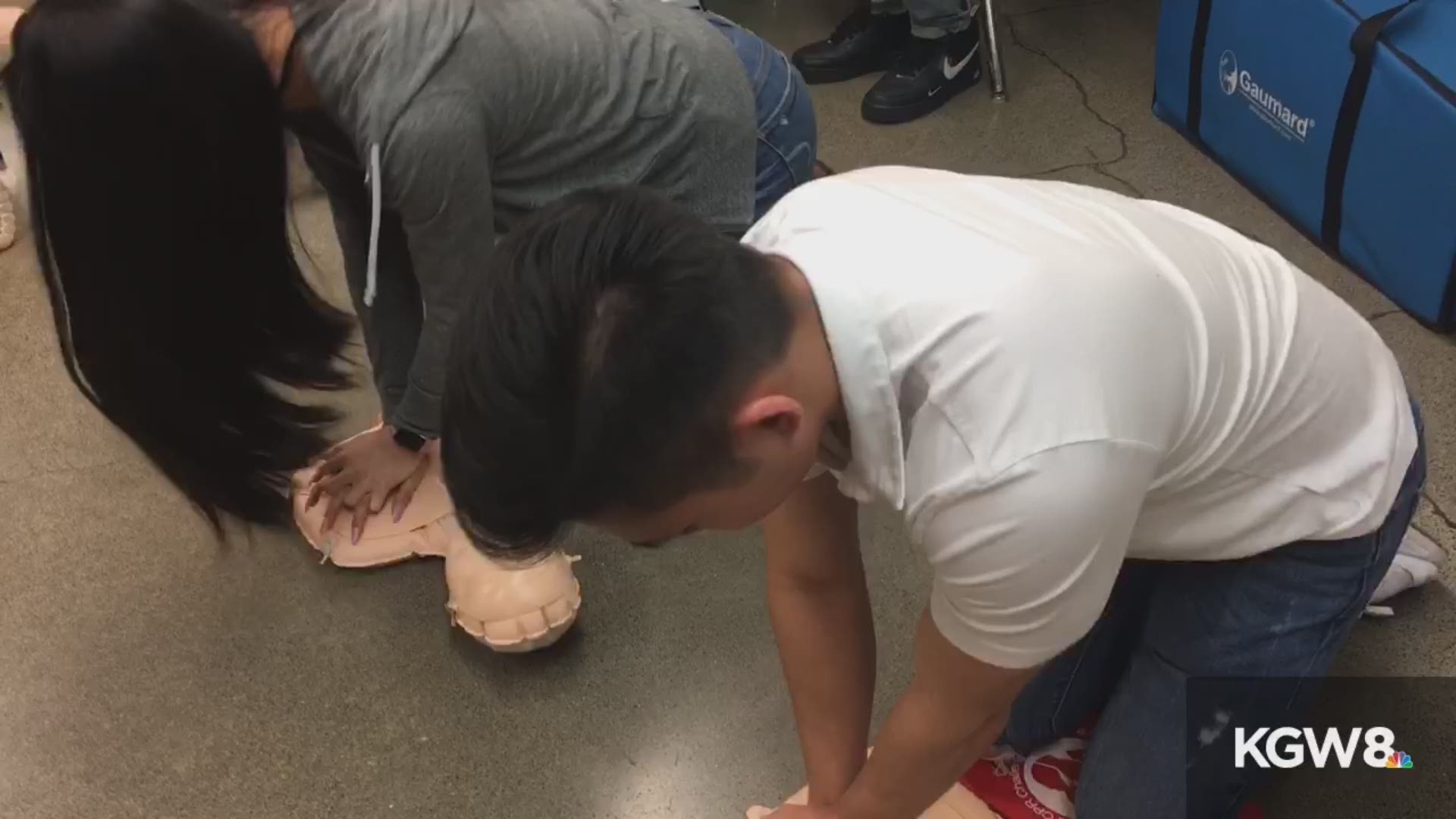PORTLAND, Ore. — More Americans are seeking out information and educational resources in the wake of the on-field cardiac arrest of Buffalo Bills player Damar Hamlin during Monday Night Football, according to the American Heart Association (AHA)
“We know that CPR saves lives and the cardiac incident that DeMar Hamlin experienced on the field is a testament to that,” Executive Director for AHA of Oregon and Southwest Washington Nick Brodnicki said.
The 24-year-old NFL safety is recovering after suffering cardiac arrest on the field. The quick response of CPR from assistant trainer Denny Kellington helped save his life.
Since then, Americans’ interest in learning CPR to potentially save a life has skyrocketed. More people are looking for educational resources to become active responders in an emergency with or without training.
After Hamlin’s incident, the American Heart Association reported a 20% increase in pageviews to Hands-only CPR content pages, which includes hands-only video and resources.
“I think most folks are seeking out a way to understand how they can take action if they are in an environment or an experience like what Hamlin experienced himself,” Brodnicki said.
CPR stands for Cardiopulmonary Resuscitation. It’s an emergency lifesaving procedure performed when the heart stops beating.
“What CPR is really all about is continuing to get that blood flowing because blood is what gets oxygen to all the vital tissue,” Executive Medical Director for Regence Dr. James Polo said.
In one year alone, 350,000 Americans die from cardiac arrest. Globally, cardiac arrest claims more lives than colorectal cancer, breast cancer, prostate cancer, influenza, pneumonia, auto accidents, HIV, firearms and house fires combined, according to AHA.
CPR, especially if performed immediately, can double or triple a cardiac arrest victim’s chance of survival. Yet, bystanders only perform CPR 46% of the time.
“I think someone is fearful of jumping in when they see someone having cardiac arrest because they're unsure of what action to take and that could fall under the category of not having refreshed those skills in a while. Feeling like they might hurt that person,” Brodnicki said.
“There really aren't a lot of people that experience a cardiac arrest while they're in a hospital setting. It's usually in the home setting or in a public setting and so time is really of the essence,” Polo said.
There are two commonly known versions of CPR. For healthcare providers and those trained – conventional CPR uses chest compressions and mouth-to-mouth breathing.
For the general public and bystanders who witness an adult suddenly collapse -- compression-only or Hands-Only CPR. This is CPR without mouth-to-mouth breaths.
“You can save a life without certification. You can perform hands-only CPR and use an AED without certification,” Brodnicki said.
So, what should you do if you, a bystander, see someone collapse and go into cardiac arrest?
First, call 9-1-1 or send someone to call. Then, start CPR. Push hard and fast in the center of the chest.
“Make sure that that person is on flat, stable ground and start performing chest compressions hard and fast right to the center of their chest,” Brodnicki said. “If there is an AED nearby, as you're calling 911, they're going to advise you to have someone get that AED, and then you'll want to start using that AED along with those chest compressions.”
AED stands for automated external defibrillator. Many public buildings and offices have them, but only 50% of people can locate an automated external defibrillator at work, according to AHA.
With 10,000 cardiac arrests annually in the workplace, knowing this small piece of information has the potential to save thousands of lives.
The first step is educating yourself. Next, consider getting certified in CPR and First Aid response.
CLICK HERE to watch the American Heart Associations training videos on Hands-Only CPR. Learn more at www.heart.org.

